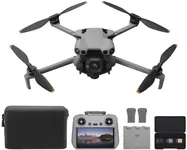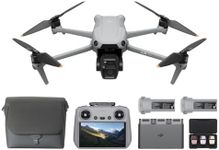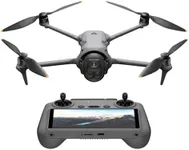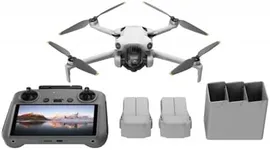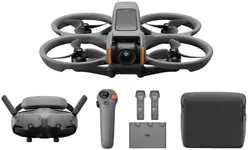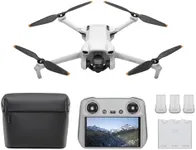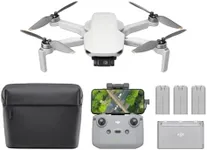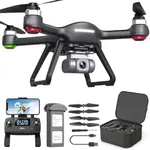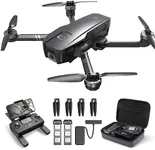Buying Guide for the Best Dji Drones
When choosing a DJI drone, it's important to think carefully about what you want to use it for. Whether it's for photography, videography, racing, or just having fun, different drones are designed with specific users in mind. Start by defining your main goals—do you want stunning aerial photos, or is portability more important to you? Consider how experienced you are, as some drones are better suited to beginners while others offer advanced features for seasoned pilots. Understanding your needs will guide you to a drone that fits your lifestyle and ensures you'll get the most out of your purchase.Camera QualityCamera quality in a drone is determined by factors such as resolution (measured in megapixels for photos and pixels for videos), sensor size, and camera stabilization. Higher resolutions and larger sensors generally deliver sharper, clearer images and video, making them important if capturing professional-looking content is your goal. Camera stabilization, usually provided by a gimbal, helps keep footage smooth even when the drone is moving. For casual users or beginners, lower resolutions may be sufficient, as they're easier to edit and store, while enthusiasts and professionals will benefit from higher quality cameras and advanced stabilization to achieve cinematic results.
Flight TimeFlight time refers to how long the drone can stay in the air on a single battery charge. Most drones fall within a range of about 10 to 40 minutes per flight. Shorter flight times can be limiting, especially if you want to shoot longer videos or travel far from your starting point, while longer flight times provide more freedom and flexibility. If you plan to do short, quick flights for fun or simple photos, a drone with a lower flight time may work fine, but if you want to capture more footage or cover larger distances, look for models at the higher end of the range.
RangeRange describes how far the drone can fly from its controller or your device before losing connection. This can vary from a few hundred meters to several kilometers. A greater range allows for more expansive flights and provides confidence when flying in wide open spaces. For flying in small areas like parks or your backyard, a shorter range is usually enough, but for exploring landscapes, filming large events, or doing survey work, a longer range is better to keep control over greater distances.
Obstacle AvoidanceObstacle avoidance refers to the drone’s ability to detect and maneuver around obstacles using built-in sensors. Some drones only have downward sensors to help with landing, while others have sensors in multiple directions for greater protection. If you are new to flying drones or plan to use your drone in environments with trees, buildings, or other obstacles, robust obstacle avoidance can prevent accidents and make flying more stress-free. More experienced pilots flying in open spaces may not need as many sensors, but having this feature can always add an extra layer of safety.
PortabilityPortability is about how easy it is to carry and transport your drone. Smaller, foldable drones are easier to fit into backpacks and travel with, making them great choices for people who plan to hike or travel often. Larger drones may offer more advanced features or better cameras, but can be bulky and heavier to carry. If you want to bring your drone on vacations, daily adventures, or walks, prioritize portability, while stationary or professional uses where you don't mind carrying extra gear can benefit from larger drones.
Ease of UseEase of use includes things like how simple the controls are, the quality of the app that connects to the drone, and any smart flight modes that help with automatic flying and video capture. Beginners benefit from drones with intuitive controls, beginner modes, and helpful features like auto takeoff, landing, and return-to-home. More advanced users might want manual settings and custom flight paths. Consider your comfort level and how much time you want to spend learning versus flying when evaluating this aspect.
Wind ResistanceWind resistance describes how well a drone can cope with gusty conditions without losing stability. Drones with higher wind resistance can fly more reliably in challenging weather, keeping footage smooth and reducing the risk of accidents. If you plan to fly often in open areas or places where wind is a factor, a drone with good wind resistance is a must. For indoor flights or on calm days, this may be less of a concern.
Repair and Support OptionsDrones can be susceptible to crashes or technical failures, so having access to spare parts, reliable customer support, and repair services is important. Models with widespread service networks or easily available replacement parts are more convenient to own and maintain. If you're new to drones or plan to use yours intensively, look for those with better support and service to minimize downtime and frustration.
